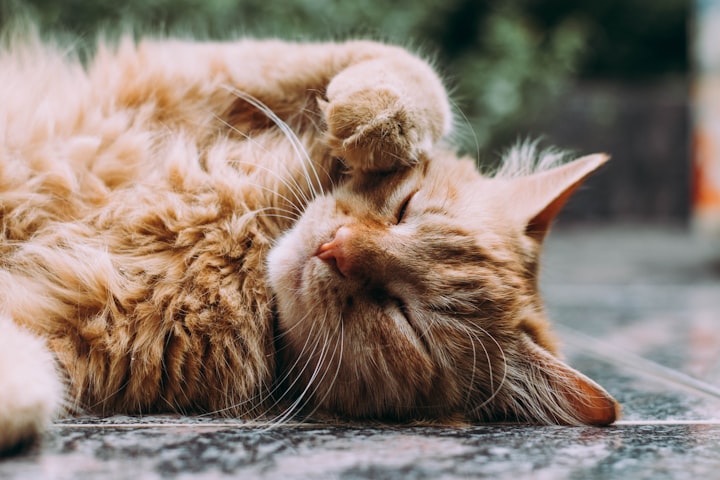How to Solve Cat Scratching Issues?
A Comprehensive Guide

Cat scratching is a natural behavior for our feline friends. However, it can be frustrating and damaging when your beloved kitty scratches your furniture. Fortunately, there are effective ways to solve cat scratching issues without compromising your cat's instincts.
Why Do Cats Scratch?
Understanding why cats scratch is crucial in finding the right solutions. Cats scratch for several reasons:
- To remove the outer sheath of their claws
- To mark their territory visually and with the scent
- To stretch their muscles and maintain flexibility
- To relieve stress and express emotions
- Providing Suitable Scratching Surfaces
To redirect your cat's scratching behavior, it's essential to provide suitable alternatives:
- Invest in a sturdy scratching post or cat tree with different textures and materials.
- Place the scratching post near the furniture your cat frequently targets.
- Ensure the scratching post is tall enough for your cat to stretch fully.
- Encouraging Positive Scratching Habits
- Use interactive toys or treats to attract your cat to the scratching post.
- Gently guide your cat's paws toward the scratching post and reward them with praise or treats.
- Apply catnip or a cat attractant spray on the scratching post to make it more appealing.
Deterrents for Undesirable Scratching
To deter your cat from scratching furniture or other undesired surfaces:
Cover the targeted furniture with double-sided tape or aluminum foil, which cats dislike.
Use a citrus-scented spray on the furniture, as cats are generally averse to citrus smells.
Place a motion-activated deterrent near the furniture, emitting a harmless burst of air or sound when your cat approaches.
Trimming Your Cat's Nails
Regular nail trimming can minimize the damage caused by scratching:
Get your cat accustomed to having their paws touched from a young age.
Use proper cat nail clippers and trim the sharp tips, being cautious not to cut too close to the quick.
Gradually increase the frequency of nail trims as your cat becomes more comfortable.
Diverting Attention with Interactive Toys
Providing engaging toys can redirect your cat's attention away from furniture:
Offer a variety of interactive toys that mimic prey behavior, such as feather wands or treat-dispensing puzzles.
Rotate the toys to keep your cat mentally stimulated and prevent boredom.
Seeking Professional Help
If the scratching issues persist despite your efforts, consider consulting a veterinarian or animal behaviorist. They can offer personalized guidance and suggest additional strategies based on your cat's needs.
FAQs
Q1. Should I declaw my cat to prevent scratching issues?
A1. Declawing is an invasive and painful procedure and should only be considered as a last resort. There are humane alternatives available to manage scratching behavior effectively.
Q2. My cat is still scratching despite providing alternatives. What should I do?
A2. Ensure the scratching post is appealing, and try different textures or locations. Consult a professional for further advice or behavior modification techniques.
Q3. Can I punish my cat for scratching furniture?
A3. No, punishment is not an effective solution. It may increase your cat's stress and anxiety, leading to more behavior problems. Instead, focus on redirecting and positively reinforcing desired scratching behaviors.
Q4. Can I use claw covers or caps to prevent scratching?
A4. Claw covers, or caps can be an option to temporarily prevent damage caused by scratching. However, they should be used under the guidance of a veterinarian and should not replace providing appropriate scratching surfaces.
Q5. My cat only scratches when I'm not home. What can I do?
A5. Try leaving interactive toys, puzzle feeders, or a scratching post near the areas your cat tends to scratch. This can provide alternative outlets for their energy and redirect their scratching behavior.
Q6. Will getting another cat as a companion solve the scratching issue?
A6. While getting a companion for your cat can provide mental stimulation and reduce loneliness, it may not automatically solve scratching issues. Follow the steps outlined in this guide and introduce the new cat properly to ensure a harmonious environment.
Conclusion
Addressing cat scratching issues requires understanding their behavior, providing suitable scratching surfaces, and redirecting their attention. By implementing the strategies outlined in this comprehensive guide, you can help your cat develop positive scratching habits while protecting your furniture. Patience, consistency, and positive reinforcement are key in solving cat scratching issues and maintaining a happy, scratch-free home.
About the Creator
Ayesha Mughal
I have extensive experience writing for the web, focusing on creating high-quality content that is both informative and engaging. My writing style is adaptable, allowing me to write on various topics in various formats.





Comments
There are no comments for this story
Be the first to respond and start the conversation.